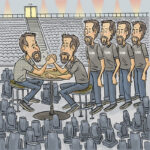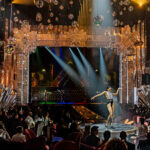Automated lighting programmers are responsible for more than just mastering their console of choice. A programmer must also understand the capabilities and functions of the fixtures under their command. Quite often, an LD will specify a fixture type without knowing all the capabilities, or a lighting company may substitute one fixture type for another. In addition, fixtures contain various modes that can greatly affect the abilities of the fixture. Automated lighting programmers need to be aware of the fixtures they are programming and educate themselves about the details of each unit. Recently, I received the plot for an upcoming production, and I noticed that it had a new type of wash fixture that I had never used before. I had just seen these in action at LDI a few months before. So the first thing I did was to go to the manufacturer's website and read the specifications on the unit. This gave me a basic understanding of the features set and various configuration modes. I also downloaded the user manual and DMX protocol. The next step was to locate a fixture library for my console. Since I knew this was a brand new fixture, I assumed that the library was not in the current software for my fixture. However, I went to the console website to double check. After confirming it was not in the software, I headed to their online forum to look for a download of the library. Sure enough, it was right there waiting for me; so I downloaded it and loaded it into my show file. Had it not been available, I had plenty of time to request one before my gig.
-Brad Schiller, from "Feeding the Machines," PLSN, Feb. 2011


